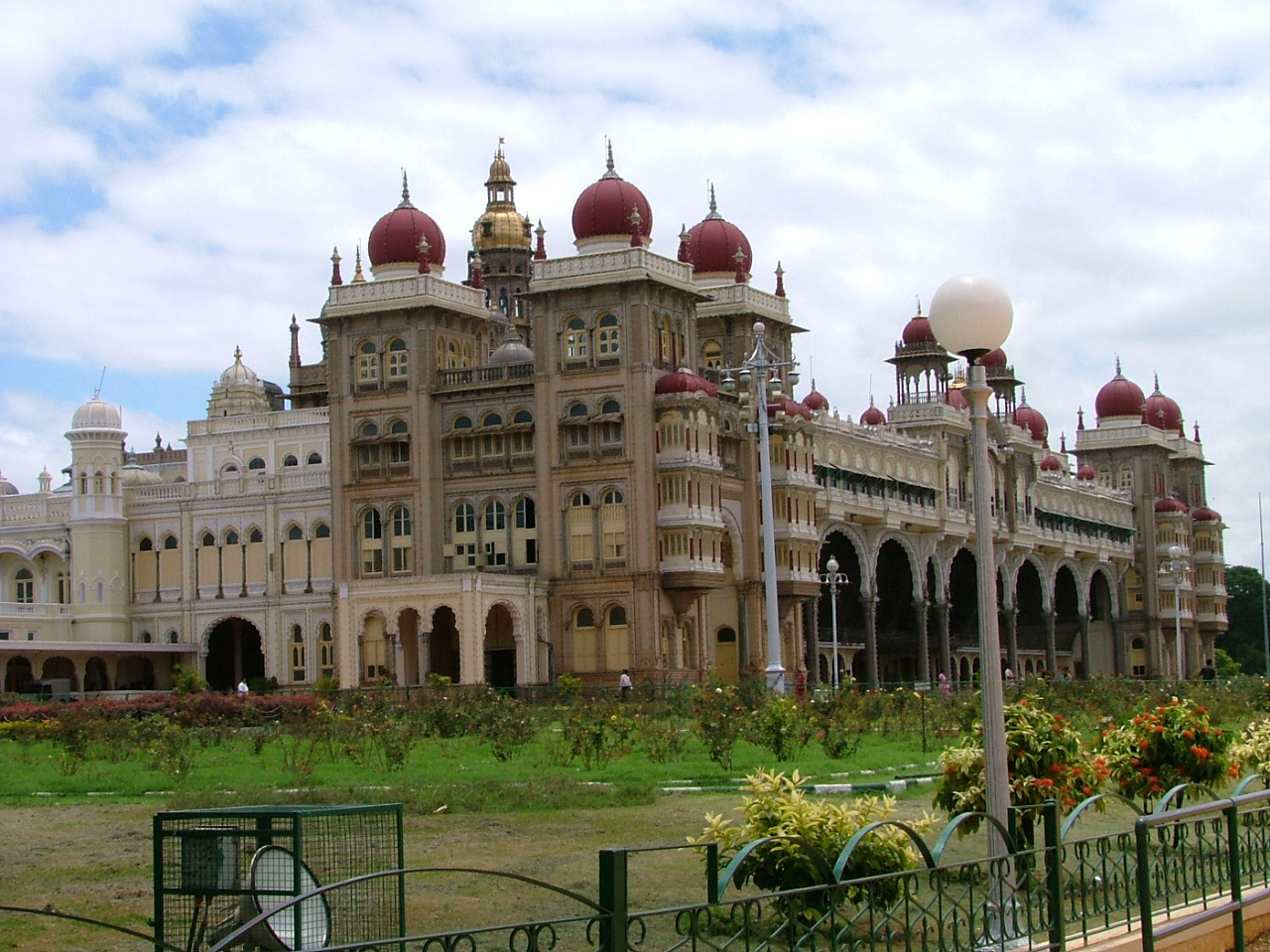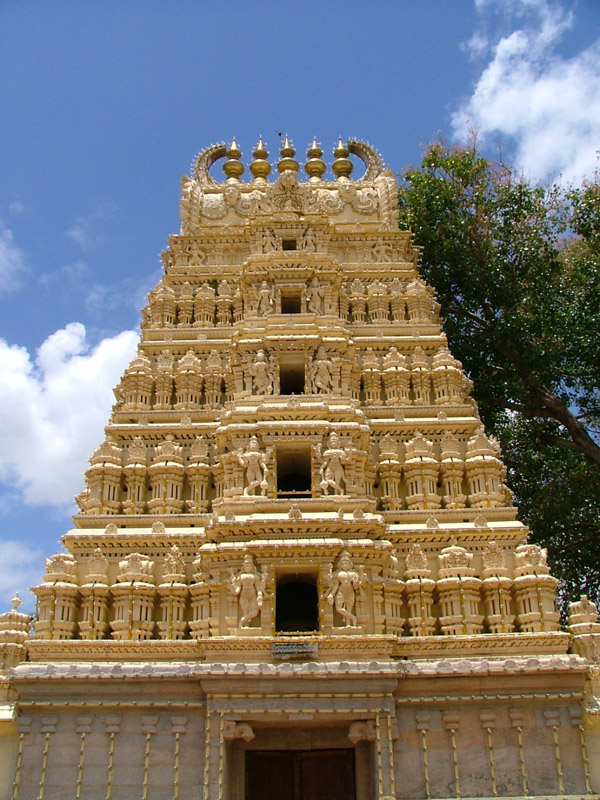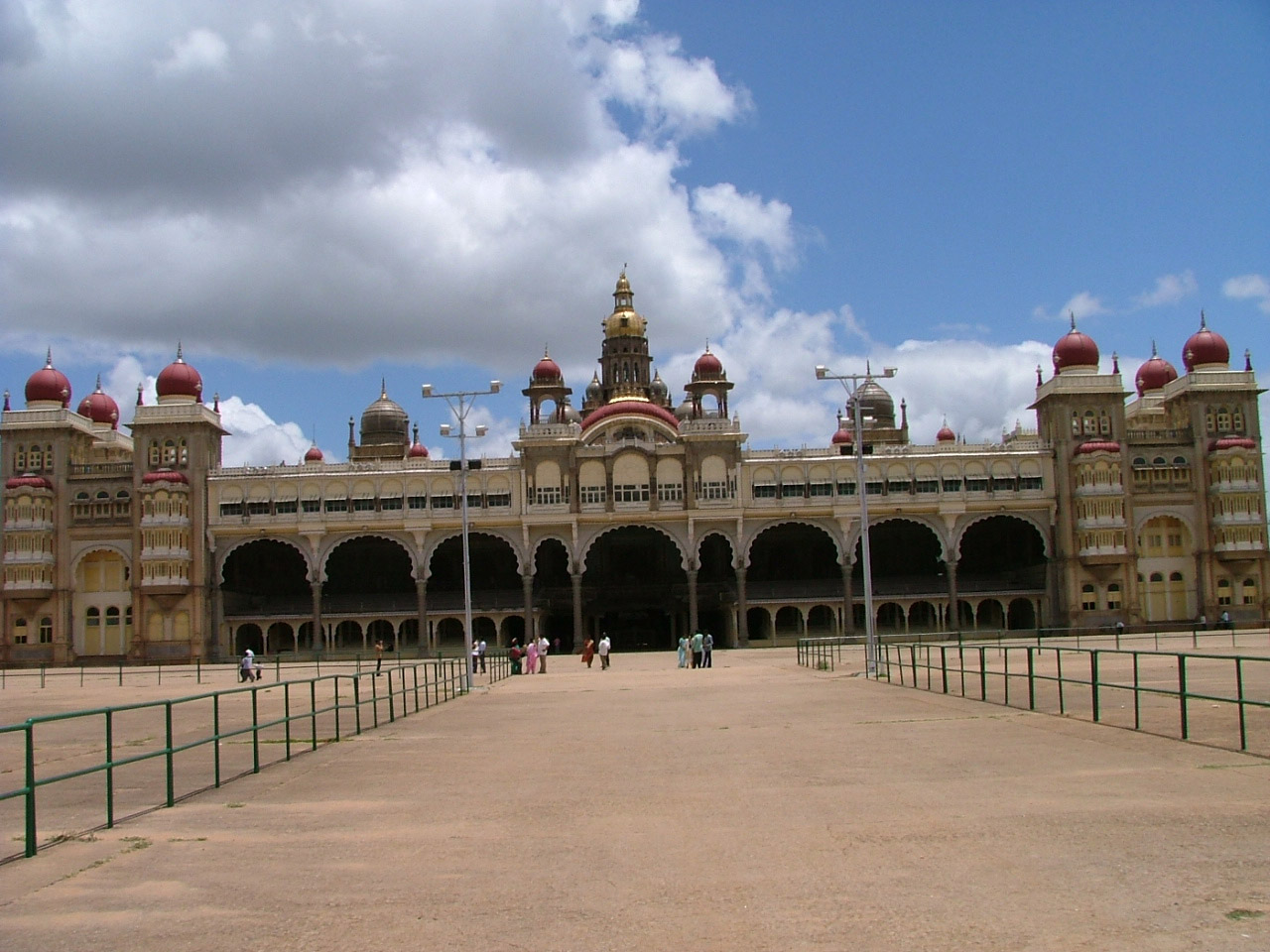Finally, I found some time to start writing and posting the photos of my recent Mysore and Coorg trip.
On our way back from Coorg, we made a stop-over in Mysore. I didn’t miss the chance to go again to Mysore Palace, this time in the broad day-light. After buying a Rs.15 ticket you are allowed inside the palace. Cameras and Footwear (Shoes/Chappals) are not allowed; both have to be deposited in respective booths. Cameras for the reason the flashlights will damage the delicate handmade paintings. Footwear to be left outside as there is a Lord. Ganesha’s temple with poojas performed every day inside the palace. This follows the Indian Tradition of respect not to have having footwears inside temples.
Though guides/guided tours are not compulsory, we hired the services of a local approved Guide (Mr.Rajasekhar) to explain us about the palace. It costs about Rs.280 for the 90 minutes guided tour for a team of 4 adults. After the tour, I should say without our experienced guide, we would have missed appreciating 90% of the charm of the beautiful palace. So please do hire a guide to enjoy this once in a lifetime experience.
I have been to palaces in the UK especially the Palace of Holyrood, Edinburgh (Scotland) and to Buckingham Palace in London; I should confess that in sheer beauty Mysore Palace impressed me more.
Though the “Dynasty of Kings” is abolished in India, the Raja of Mysore (Wodeyar) still lives in the Palace. He allows public access to about half of the sprawling palace. Unlike earlier days his income now comes from the many businesses which he owns. The palace itself is run by a board of Trustees with the active support of Karnakata State Government.
The Palace was constructed in 1912 at the expense of Rs.42 Lakhs (!) and was designed in Indo-Saracenic style by Henry Irwin, the British consultant architect of Madras state. Indo-Saracenic architecture represents a synthesis of Muslim designs and Indian materials with some European influence. It can be seen clearly in the following photo of the domes on top of the palace.
The main hall is adorned with a set of 3-dimensional paintings that depict the splendid Dasara festivals. The speciality of these paintings is that each of the faces in the paintings is unique and corresponds to real people who lived in those times (so in a way it is like a Manual Photograph). Also, the paintings have a unique ability to have the objects in it face you, no matter from what angle you see it. So walking from left to right in front of the paintings the people (their eyes, shoes, dresses, face) also walk along with you. “Spell Bound” is the only way to describe this.
The palace built by Chamaraja Wodeyar also has many other interesting things. Concealed Electrical points on the floor with brass caps, Tall Belgian Mirrors and Huge Iron Cast Pillars imported from the UK. There are a lot more to write about the palace but I leave those for you to see in person.
You can read more about the palace from MysoreSamachar site or from Tourism Website and about the Mysore Rulers here.





